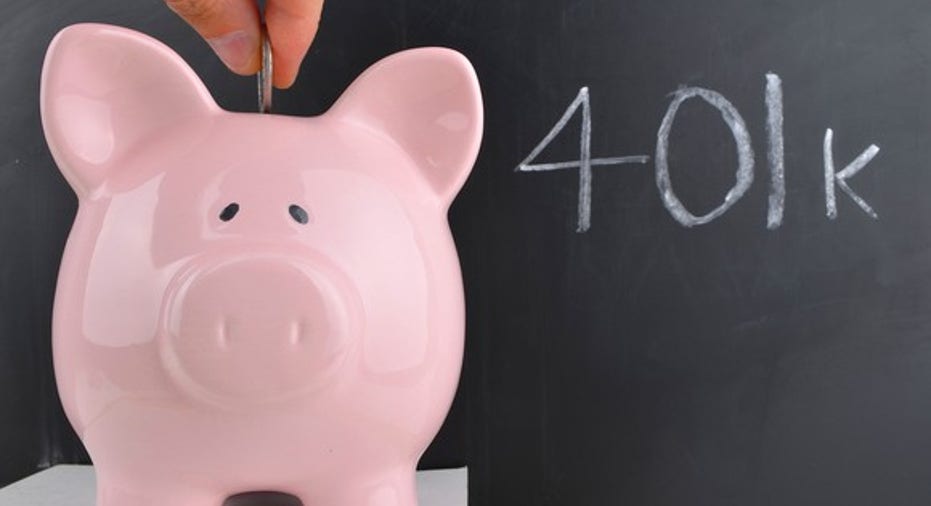The Average American's 401(k) Balance Has Never Been Higher -- But It's Still Not Enough

According to recent analysis by Fidelity, the average American's 401(k) balance has reached a record high, mainly thanks to the Trump rally, but also because of better savings rates and automatic enrollment in 401(k) plans. However, the average American's 401(k) savings still isn't good enough. Here's the current state of retirement saving in the U.S., and why you should aim to be better than average.
Image Source: Getty Images.
First, the good news
In Fidelity's latest retirement analysis, which covers the fourth quarter of 2016, the numbers looked pretty good. The average American's 401(k) balance is now $92,500, an all-time high. This is up $4,300 from the same time last year, and is 33% higher than the average balance just five years ago.
There are a few reasons for this. Most obviously, the stock market has performed well. Since a large amount of 401(k) assets are invested in stock-based mutual funds, the "Trump rally" is a big reason why many people saw their 401(k)'s value skyrocket during the fourth quarter.
Also, automatic enrollment has become more widely adopted. 70% of Fidelity's 401(k) plans auto-enroll workers. Automatically increasing contributions has also become more popular, as 16% of plans will automatically boost workers' contributions each year if they want.
Finally, people are saving more, which is perhaps the best news in the report. The average employee contribution rate is now 8.4%, the highest savings rate since before the financial crisis. When you include employer matching contributions and profit-sharing, the overall contribution rate is 12.4% of salary for the average 401(k) participant. Since many financial advisors suggest an overall retirement saving rate of 15%, we're not too far off.
It's not just 401(k) savings that is improving. Fidelity reports that nearly 500,000 IRA accounts were added on their platform alone, and that the average IRA balance of $93,700 is up $3,600 since last year.
Data Source: Fidelity.
The average American is still woefully underprepared for retirement
Don't get me wrong. $92,500 in retirement savings is better than $69,400, so we're heading in the right direction. However, this isn't nearly enough.
Experts generally agree that to maintain your quality of life after retirement, you'll need about 80% of your pre-retirement salary. Social Security is designed to replace about 40% of the typical retiree's salary, so the other 40% will need to come from other sources, such as your 401(k). For example, if you and your spouse have a combined income of $75,000, this means you should aim to produce about $30,000 per year from sources other than Social Security.
Another rule of thumb is the "4% rule" of retirement savings, which says that you can only expect to withdraw 4% of your retirement savings per year if you don't want to worry about your nest egg running out. The average 401(k) balance of $92,500 translates to just $3,700 in sustainable annual income. A separate report from Vanguard found that 401(k) holders nearing retirement -- ages 55-64 -- had an average balance of $177,805, which would produce just $7,100 in income. While the rule is far from perfect, it is a good guideline. But ask yourself: Would $7,100 per year on top of Social Security be enough for you to live comfortably in retirement? Probably not.
Most people have far less than the average savings
Perhaps the most alarming piece of data on American retirement savings is the median 401(k) balance. The Vanguard report, which found a similar average as Fidelity's analysis, found a median 401(k) balance of just $26,405. The median represents the midpoint of a given set of data, so this means that half of all 401(k) balances are less than $26,405.
To be fair, there are some reasons for this that could contribute to the lower median. Auto-enrollment is relatively new, and younger 401(k) accounts will obviously have smaller balances than those that have been open for many years. Also, since it's becoming more common for workers to change jobs every few years, many workers have multiple 401(k) accounts, or IRAs that resulted from rolling over former employers' accounts.
However, it's fair to say that most Americans are not on track for a comfortable retirement, based on the current state of 401(k) savings.
What you can do if you've fallen behind
The best advice I can give if you need to do a better job of saving for retirement is to simply save more, although I realize that's easier said than done. I mentioned that experts generally suggest an overall savings rate of 15%, but you don't need to get there overnight. Try increasing your contributions gradually, say, by 1% of your salary per year until you reach your target. Or, increase your contribution rate every time you get a raise, so you won't even feel the sting of your paycheck decreasing.
The bottom line is that while retirement saving in the United States is clearly improving, the average simply isn't good enough. Strive to be better than average, and your future self will be glad you did.
The $15,834 Social Security bonus most retirees completely overlook If you're like most Americans, you're a few years (or more) behind on your retirement savings. But a handful of little-known "Social Security secrets" could help ensure a boost in your retirement income. For example: one easy trick could pay you as much as $15,834 more... each year! Once you learn how to maximize your Social Security benefits, we think you could retire confidently with the peace of mind we're all after.Simply click here to discover how to learn more about these strategies.
The Motley Fool has a disclosure policy.